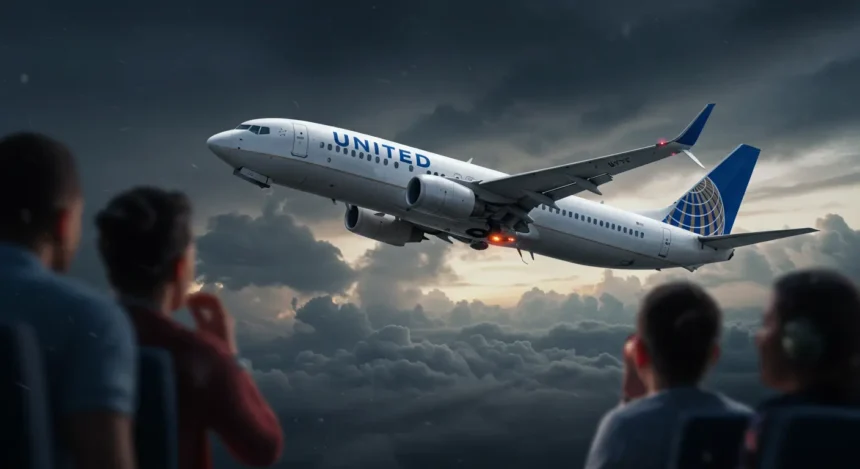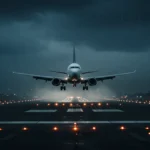If you’ve ever flown with United Airlines or just follow news about airline safety, you may have heard about the emergency diversion of United Airlines Flight UA770. This event capture the attention of passengers, aviation enthusiasts, and the general public. Emergency diversions are rare, but when they occur, they raise important questions about airline safety and how such situations are handle.
We’ll break down what happen during the United Airlines Flight UA770 emergency diversion, why it happen, and how the situation was handle. We’ll also address frequently ask questions about emergency diversions, safety procedures, and what you can expect if you ever find yourself in a similar situation.
What Happened on United Airlines Flight UA770?
United Airlines Flight UA770 was a scheduled flight departing from San Francisco, California, to Newark, New Jersey. This flight is usually a long-haul journey, covering approximately 2,500 miles. However, things took a turn when the aircraft encountered an unexpect emergency situation mid-flight.
The flight, which was a Boeing 777, had been cruising at an altitude of 35,000 feet when an issue arose. According to reports, the aircraft had a mechanical malfunction, which require the pilot to make the difficult decision to divert the flight to the nearest available airport for safety reasons. The flight was divert to Denver International Airport, about halfway into its journey.
Why Did United Airlines Flight UA770 Divert?
Mechanical malfunctions, although rare, are a significant factor that can lead to a flight diversion. Airlines, including United Airlines, have strict protocols in place for handling such incidents to ensure passenger safety.
For Flight UA770, the airline’s flight crew follow the appropriate emergency protocols when they notice signs of a potential mechanical issue. The decision to divert the plane was made quickly to prevent any further complications and ensure that passengers were safely landed at an airport that could handle an emergency situation.
It’s important to note that mechanical diversions are a standard procedure. The goal is always to minimize risk and ensure the safety of everyone on board. While diversions can be inconvenient for passengers, they are crucial steps in preventing more serious incidents.
What Happened After the Diversion?
After Flight UA770 landed at Denver International Airport, emergency services were immediately on standby. Fortunately, the emergency landing went smoothly, and the aircraft was able to taxi safely to the gate. Passengers were then taken off the plane and given the opportunity to continue their journey, either on another flight or through alternate arrangements.
United Airlines issued a statement following the diversion, reassuring passengers that the airline was working to address the issue and get them to their destinations as soon as possible. While many passengers were understandably frustrated by the disruption, the airline’s swift response and transparency help to calm concerns.
Emergency Diversions Why Are They Important?
Emergency diversions like the one on United Airlines Flight UA770 are part of the airline industry’s rigorous safety standards. These diversions, while unsettling for passengers, are design to protect everyone on board. Here’s why they are so important:
- Safety First: The primary reason for any diversion is to ensure the safety of passengers and crew. Whether it’s a mechanical malfunction, medical emergency, or another urgent issue, the goal is to land the aircraft safely as quickly as possible.
- Passenger Well-being: Airlines prioritize the well-being of their passengers. If there’s a chance that an issue could develop into something more serious, diverting to the nearest airport allows emergency crews to prepare and provide the necessary care.
- Airline Protocols: Airlines are bound by strict regulations when it comes to emergency procedures. These protocols ensure that the crew knows exactly what to do in case of a diversion, leading to a more efficient response.
What Should Passengers Do During an Emergency Diversion?
If you ever find yourself on a flight that is divert, here are a few things to keep in mind:
- Stay Calm: Airplane diversions are rare, and pilots and crew are train to handle them. Trust that they will do everything in their power to ensure your safety.
- Follow Instructions: Listen carefully to the crew and follow all their instructions. They are train to guide you through emergency situations and will provide important information if needed.
- Be Patient: While diversions are inconvenient, remember that safety is the priority. Airlines will work to rebook you on another flight or provide accommodations as necessary.
FAQs
1. Was anyone injured during the emergency diversion of United Airlines Flight UA770?
No, fortunately, there were no injuries report during the diversion. The flight crew acted swiftly, ensuring a safe landing for all passengers.
2. How do airlines decide when to divert a flight?
Flight diversions are typically base on the severity of the issue. If there’s a mechanical malfunction, weather-relate problems, or a medical emergency, the flight crew will assess the situation and decide to divert if necessary.
3. What happens to passengers after a flight diversion?
After a diversion, passengers are usually either rebooked on another flight or provide with accommodations, depending on the circumstances. Airlines aim to minimize disruption and get passengers to their destinations as quickly as possible.
4. Can a flight diversion affect my travel plans?
Yes, diversions can cause delays, but passenger safety is always the top priority. If you’re affected, the airline will work to get you back on track.
Conclusion
The emergency diversion of United Airlines Flight UA770 serves as a reminder of the importance of airline safety procedures. While diversions are rare, they are a critical part of the aviation industry’s commitment to protecting passengers. Thanks to the quick and efficient actions of the flight crew, the situation was handled with minimal disruption, and all passengers were safely taken care of.






